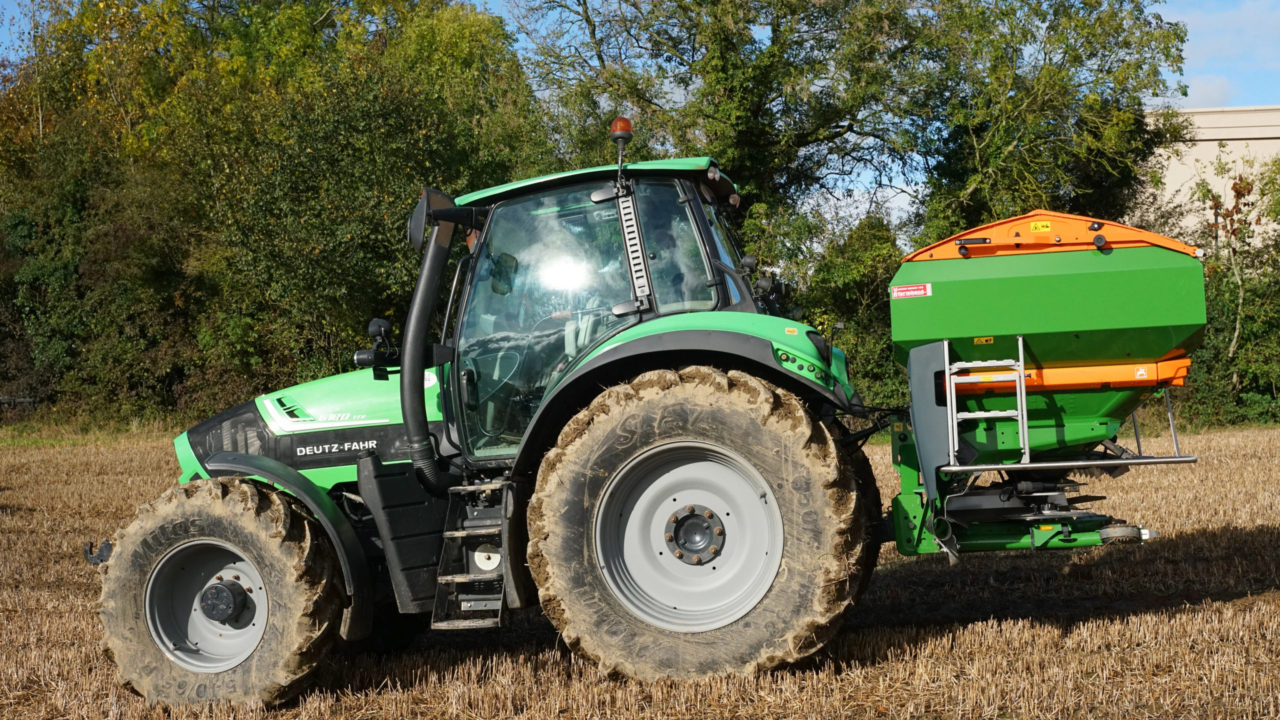This year's biggest challenge is turning out to be, not the weather, but the price of oil and gas. The effect of the former is obvious, but the latter is a little less direct in that natural gas is an ingredient of nitrogen (N) fertiliser.
It is therefore essential that with fertiliser prices lying somewhere around €1/kg (approx. 83p), the best use is made of them.
Even application is essential
Ensuring that the product being applied gets used in the most efficient manner starts with having the spreader set up and working correctly.
Brian Hanthorn, beef and sheep adviser at the College of Agriculture, Food and Rural Enterprise (CAFRE), Dungannon, has outlined the basics of doing so.
There are three major types of spreader at work in Ireland, oscillating spout (waggy tail) and single or twin disc.

All three types rely on the same basic principles to achieve as accurate a spreading result as possible.
Principles of fertiliser application
Correct working height will vary with the type and model being used, but generally speaking, 0.75 to the centre of the disc(s) or spout is normal.
It should be noted that this measurement should be taken from the top of the crop canopy rather than ground level.
In tandem with the correct working height, the spreader needs to be level, both fore and aft and from side to side. Any deviation will result in a spread pattern weighted to either one side or the centre.
All moving parts should be free to slide or rotate with no 'play' in any of the fastenings. Having checked that the hopper slide opens freely, it is well to remember to close it again before filling the spreader.
The handbook appropriate to the machine should give details of grease points and any basic calibration processes, which should be performed regularly.
Fertiliser type
Fertilisers come in various forms and each will have a different spread pattern, indeed, different batches of the same product can often have different flow characteristics.

Handbooks will contain a general guide to settings for the various types of material. Some manufacturers go even further and offer an online guide for all the common brands they have tested themselves.
Forward speed
The two other items in the the trio of essential information are forward speed and spreading width. The forward speed must be matched to the power take-off (PTO) speed to ensure the correct rpm of the disc(s) or oscillation rate of the spout.
It should be noted that forward speed may be affected by wheel slip in wet conditions, the engagement of four-wheel-drive will help minimise this. Ground speed radar, if fitted, is better still.
Although it is tempting to select a high forward speed to get the job done quickly, stability may be comprised on rough or hilly ground, especially when the hopper is full and the tractor's centre of gravity is higher than normal.
Once these have been decided upon then the appropriate slide setting can be selected, usually from a chart provided by the manufacturer.
Care of the spreader
Fertiliser just loves to munch away on straight steel, so it is essential that it is washed off after use. The application of a preservative oil or water repellent should also be considered, especially over winter.

Keeping it under cover is also recommended as not only does this keep it dry, but also helps prevent ultraviolet (UV) light degrading any plastic components, especially on the oscillating spout type.
GPS
Over the past couple of years there has been growing interest in the use of satellite navigation, or GPS, to help ensure accurate application.
They are not faultless, but can represent a tremendous advantage over the guesswork which might otherwise be involved. Generally speaking, the more expensive the system, the greater its accuracy and ease of use.

Trees, uneven ground and signal strength can all disrupt their accuracy, but they may be fitted to just about any tractor with a cab and 12v electrical supply.
Basic systems simply point to where the tractor should be heading and 'paint in' the ground that has been covered.
Auto guidance systems, which actually steer the tractor, are more expensive yet they can usually be retrofitted to any tractor with power steering.

